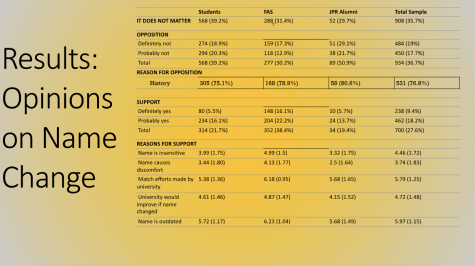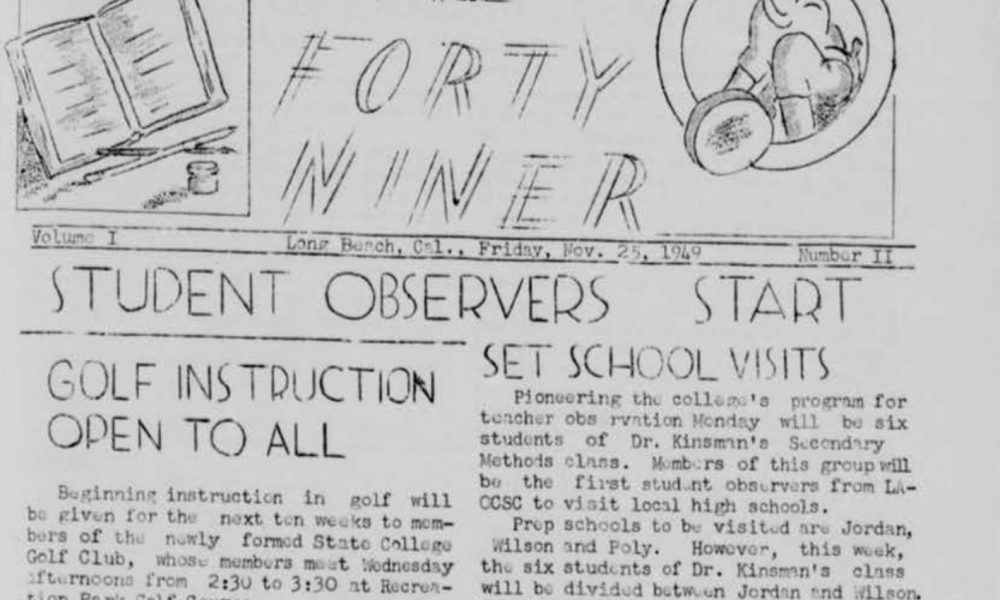If you attend or work at Long Beach State, you are probably aware of the many idiosyncrasies related to its brand and how it has been evolving for several years.
The university is sometimes called Cal State Long Beach, California State University Long Beach and other times Long Beach State, and of course The Beach, LBSU or CSULB.
On top of those brands, is Elbee the shark, the university’s mascot, which is a phonetic reference to the letters “L” and “B” in “Long Beach.” Elbee replaced Prospector Pete in 2020, which was two years after the statue of the former mascot was retired to the Alumni Center.
But, what about the sports teams? The baseball team is still the Dirtbags, while there are also Long Beach State Men’s Basketball, and Volleyball, and then Beach Track and Field and Beach Women’s Basketball.
And then there is the 49ers/Forty-Niners brand, which the university’s nomenclature page calls the “informal nickname and identifier for anyone affiliated with our university as an alumnus/alumna, employee, student or supporter.”

The 49er brand harkens back to the university’s founding year, 1949. It also has a parallel connection with the California Gold Rush, which occurred a hundred years earlier and resulted in Native American genocide.
That parallel connection was made clear by the university’s first president, P. Victor Peterson.
The term was “symbolic of the 1849 Gold Rush boom that made California famous,” Peterson said in the Long Beach Press Telegram, and “in 1949 there was another ‘rush,’ this time for education.”
The 49er brand was, until recently, used by the Forty-Niner Shops, the 49er Foundation and the Daily Forty-Niner campus newspaper. In July, the Forty-Niner Shops became Beach Shops. However, the foundation and the campus newspaper have retained the brand.
Now, student journalists connected to the Daily Forty-Niner are considering a name change for the newspaper. This could been seen as another step in the growing effort of the university to dissociate itself from the Gold Rush era.
Students’ interest in exploring a new name for the paper prompted me, and faculty members, Jennifer Newton and Trevor Bell to survey various students, faculty, administrators and staff stakeholders to see what they knew about the origin of the newspaper’s name, and if they felt that it should be changed.
The survey resulted in a recently published study in the peer-reviewed journal, “Social Sciences and Humanities Open.”
The study was an effort not only to learn what stakeholders thought, but to also educate students about ethical public relations practices.
These practices recommend that strategic decisions, such as rebranding, are based on dialogue with key stakeholders rather than anecdotal evidence.
In the survey conducted online, we asked all of the key stakeholder groups about the name, except alumni.
The university would not let us reach out broadly to alumni so we were only able to ask JPR alumni via LinkedIn.
Of the 2,542 respondents, 2,188 had opinions on the history of the name. Of those, 1,444 respondents (66%) had just one opinion and 55% of those thought the Daily 49er name was only tied to the university’s founding year, while the remaining 45% thought it was associated with the Gold Rush or Prospector Pete.
Less than a third of respondents were aware of the controversy surrounding the paper’s name, and there was no overall consensus regarding the name change. It was split between 36.7% opposed, 27.6% supported it and 35.7% indicated no preference.
In terms of the type of participant and their opinion on the matter, 50.9% of JPR alumni opposed the name change while 21.7% of students and 38.4% of faculty, staff and administration approved of the name change.
Participants in the survey had mixed feelings about the name change. Some feel that the newspaper’s name should be kept the same because of its legacy, while others stated that whether intentional or not, it invokes ideas of the California Gold Rush and needs to be changed.
“I was a student as a Forty-Niner, the coffee cups in my cupboard say Forty-Niner,” said an anonymous alumni. “I am not a shark. Nor will I be one.”
While the campus newspaper’s staff is considering the name change, it might be helpful to look at the experiences of other organizations that have changed their brands which were once perceived as offensive.
Those who were most successful in their rebranding considered the consequences of either choice and kept consistent communication with all key stakeholders throughout the decision-making process.
For example, Miami University in Ohio changed its mascot from Redskin to Redhawk with little protest after a Native group approached the university. Its campus newspaper, The Miami Student, was not controversial and kept its name.
The College of the Holy Cross, after much debate, decided to keep its Crusader moniker, but changed the name of the campus newspaper from Crusader to The Spire.
They also conducted research with stakeholders who had not been surveyed, such as local Native Americans, and alumni that the university wouldn’t allow us to survey.
In my opinion, the university should pick the brand that reflects an overall understanding of the past and the university’s mission.
Carol Perruso was CSULB’s Journalism & Public Relations librarian until she retired in 2022.




